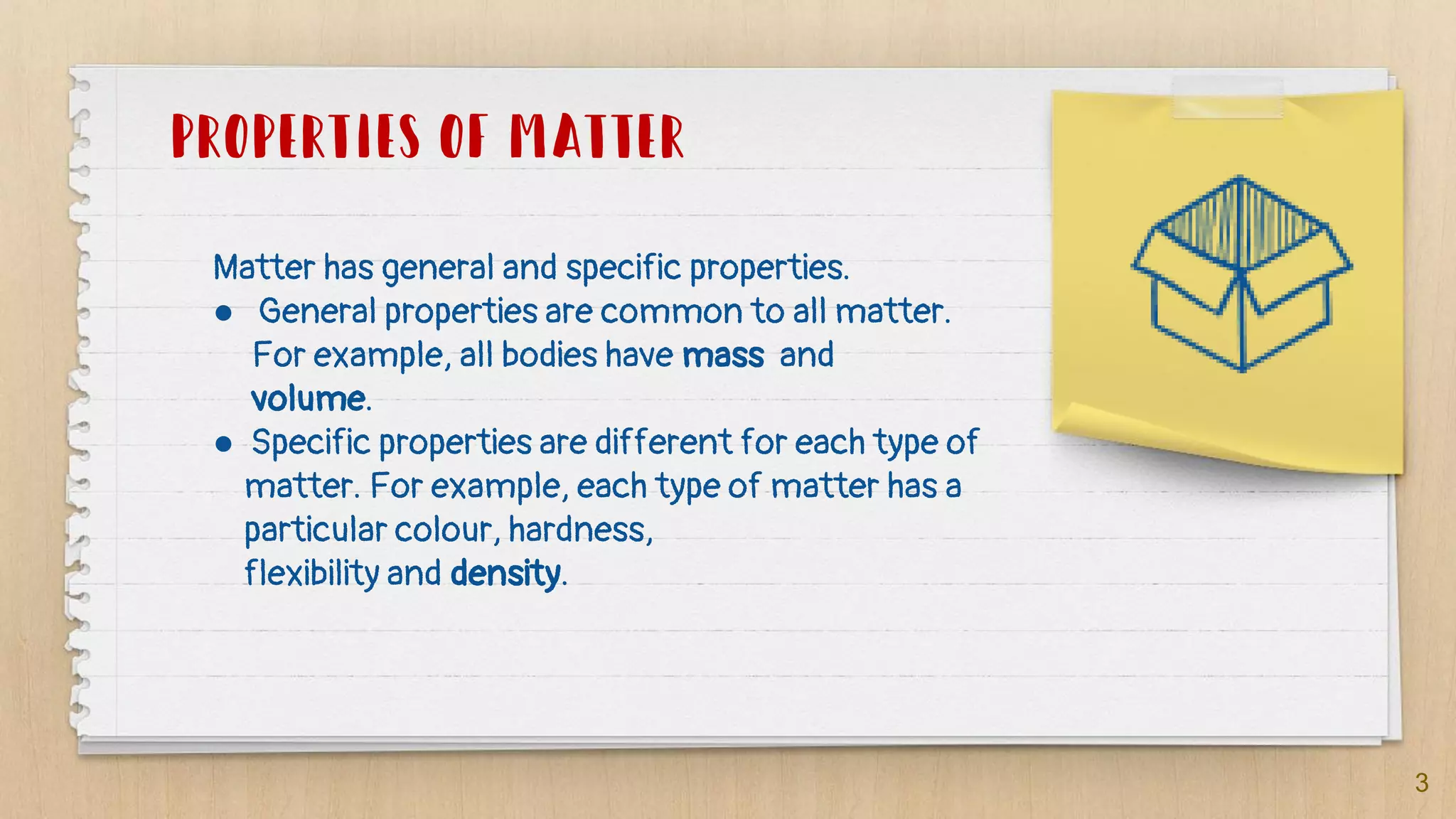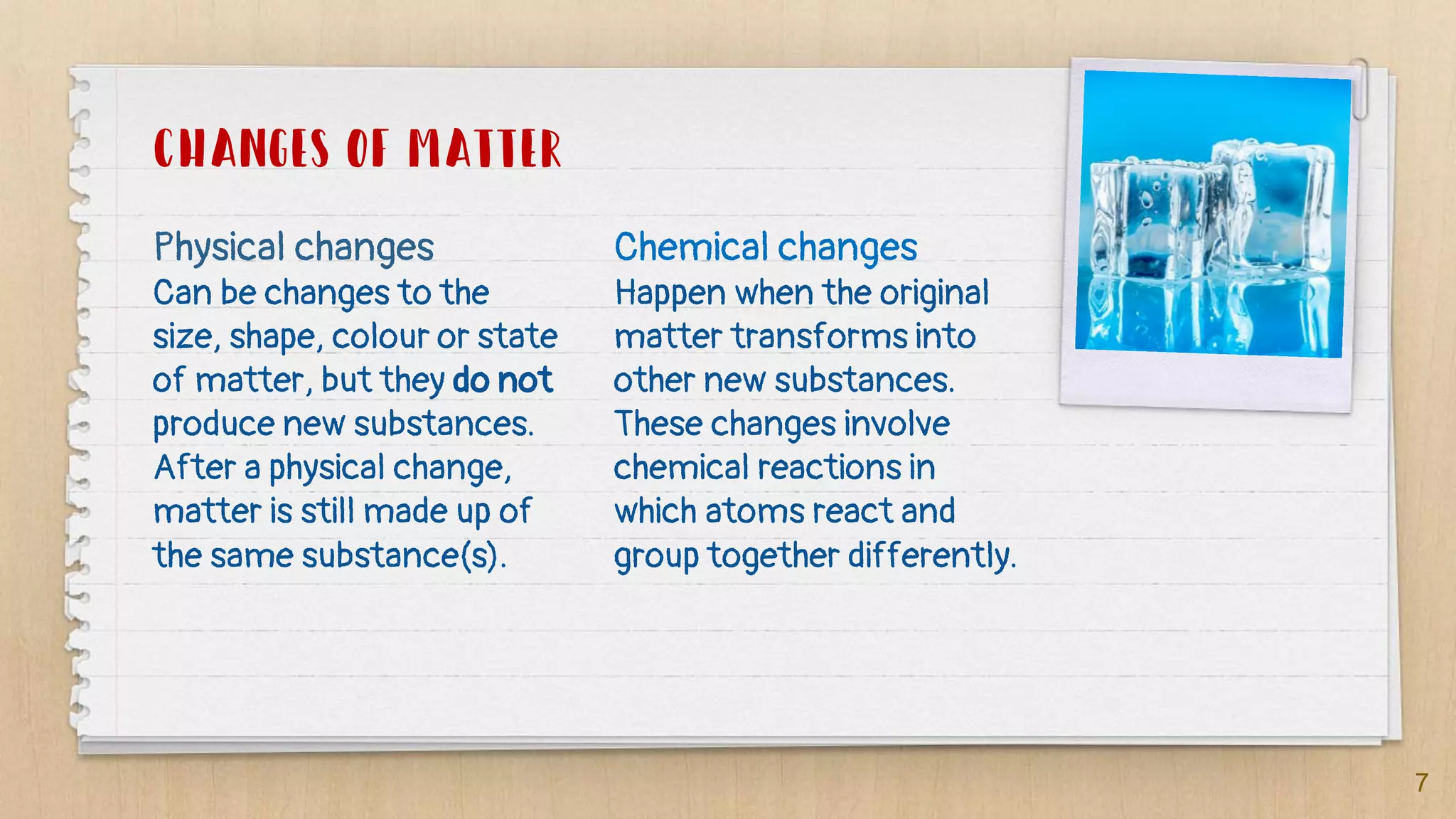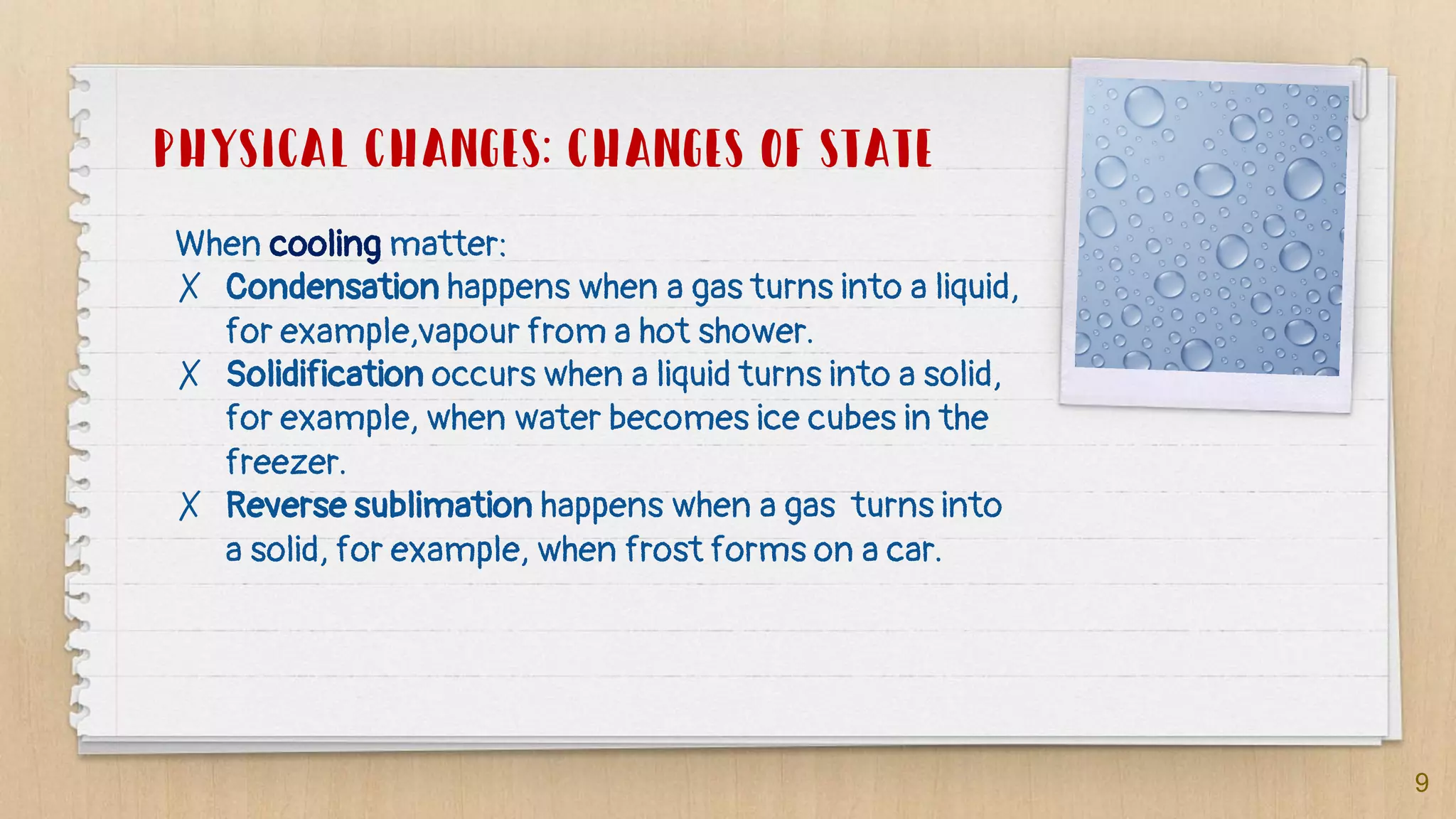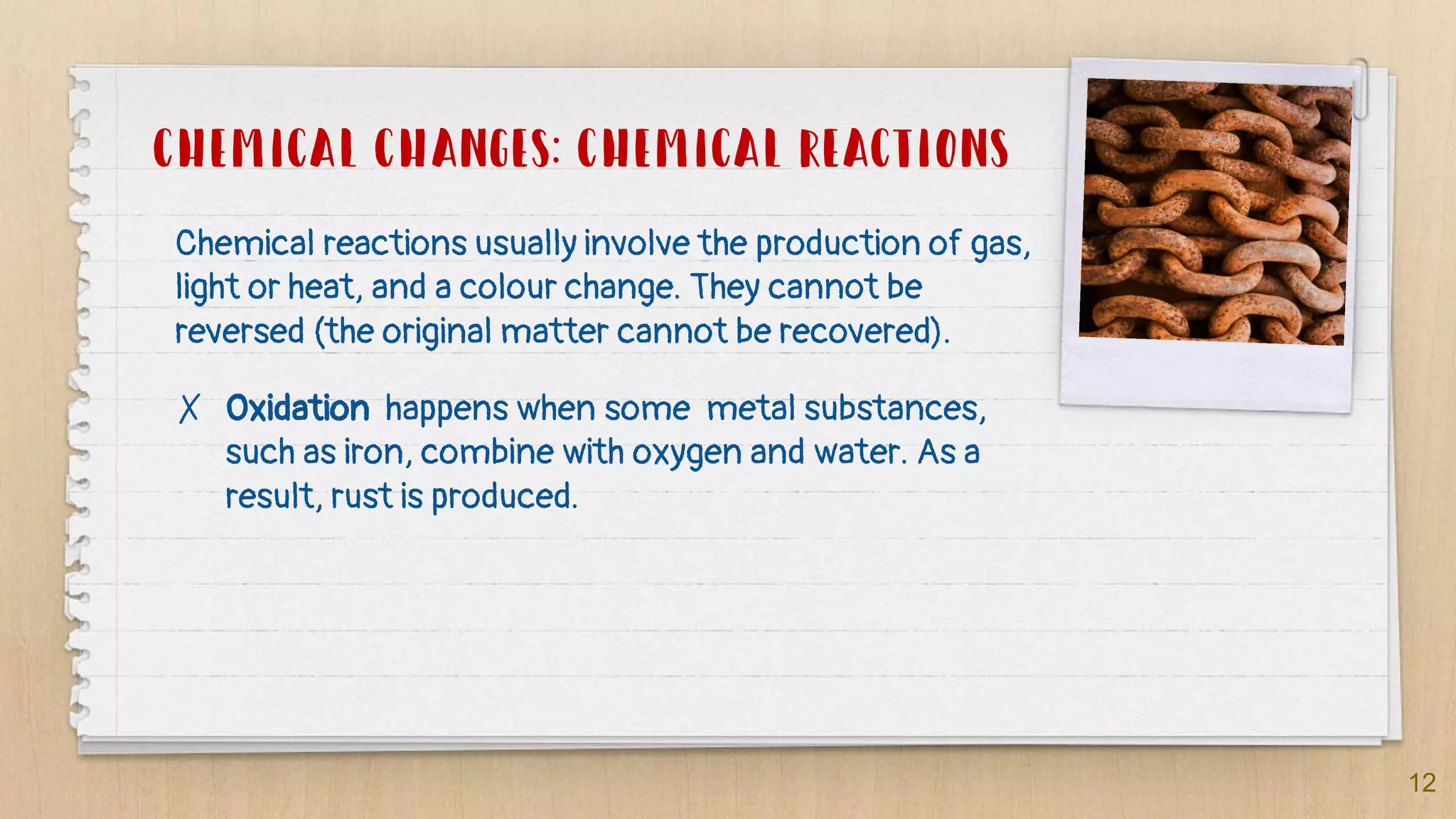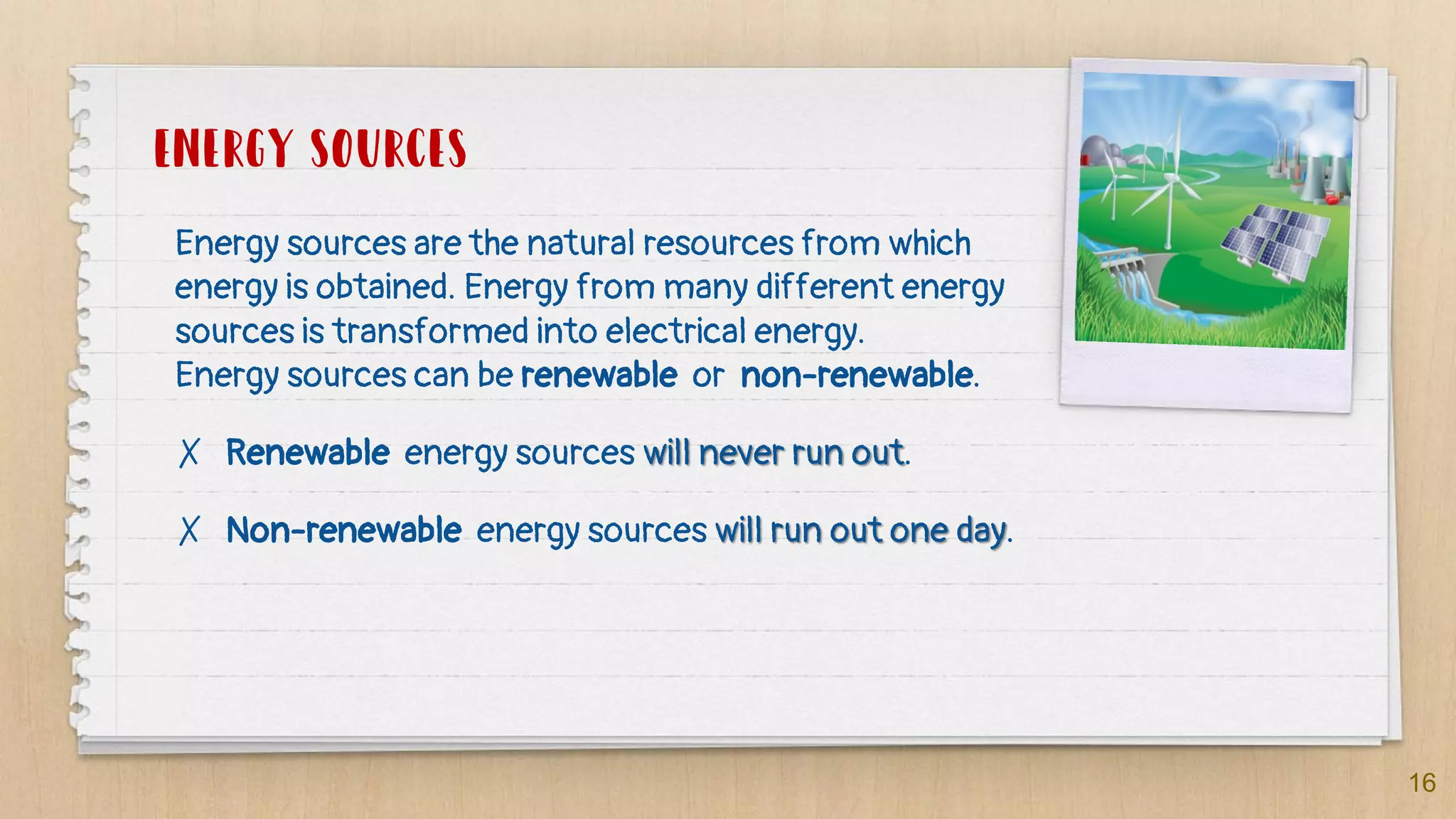This document discusses matter and energy. It defines matter as anything that has mass and takes up space. It describes the general properties of matter, including mass and volume, as well as specific properties like color and hardness that are unique to different types of matter. It also discusses physical and chemical changes, where physical changes alter the size, shape or state of matter but do not create new substances, while chemical changes create new substances through chemical reactions. The document then covers different forms of energy including light, nuclear, chemical, thermal, electrical, and mechanical energy. It explains renewable energy sources like the sun, wind and flowing water, as well as non-renewable sources like fossil fuels and nuclear fuels.


